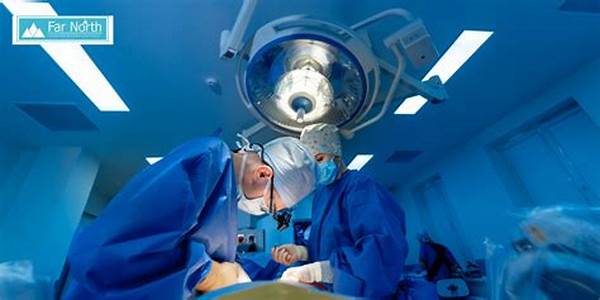Minimally invasive procedures represent a significant advancement in the field of medical surgery and treatment. These techniques are designed to reduce the physical impact on patients, resulting in quicker recovery times and fewer complications. The evolution of medical technology has paved the way for these procedures to replace traditional open surgeries in many instances, enhancing patient outcomes and satisfaction.
Read Now : Plant-based Medicine For Skin Problems
The Evolution and Significance of Minimally Invasive Procedures
The development of minimally invasive procedures has transformed modern medicine. Initially introduced as a novel concept, these procedures have gained acceptance across various medical fields, including cardiology, orthopedics, and gynecology. The principle behind minimally invasive procedures is simple: to minimize the extent of surgical incisions and therefore reduce trauma to the body. This is achieved through advanced imaging techniques and the use of specialized instruments, such as endoscopes and laparoscopes. Surgeons are able to perform complex operations through small incisions, which drastically reduce the size of the scar and the associated post-operative pain. Ultimately, these procedures contribute to shorter hospital stays, lesser anesthesia, and faster returns to daily activities, presenting a clear advantage over traditional surgical methods.
Minimally invasive procedures have not only benefitted patients but have also advanced the field of medical research. They are seen as a benchmark of innovation and an indicator of the continuous strides being made in healthcare technology. By reducing patient recovery time and improving surgical precision, these methods support both healthcare providers and patients in achieving better medical outcomes. This is particularly valuable in a world where healthcare systems are increasingly overburdened, and efficiency plays a significant role in the quality of care provided. As such, minimally invasive procedures are not only a testament to technological advancement but also a practical solution to modern surgical needs.
Benefits of Minimally Invasive Procedures
1. Reduced Recovery Time: The primary benefit of minimally invasive procedures is the significant reduction in recovery time. With smaller incisions, patients experience less postoperative pain and can return to their normal routines more swiftly than those undergoing traditional surgery.
2. Lower Risk of Infection: A crucial advantage of minimally invasive procedures is the reduced risk of infection. Smaller incisions mean a decreased chance of surgical site infections, enabling safer outcomes and enhancing patient confidence in these techniques.
3. Minimal Scarring: Patients undergoing minimally invasive procedures benefit from minimal scarring. The tiny incisions required for these procedures result in considerably less visible scars, contributing to better cosmetic results and patient satisfaction.
4. Less Blood Loss: Another advantage associated with minimally invasive procedures is the reduced amount of blood loss. This results in less need for blood transfusions, thereby decreasing associated risks and contributing to a smoother recovery process.
5. Enhanced Surgical Precision: The advanced technology used in minimally invasive procedures allows for greater surgical precision. Surgeons can navigate with increased accuracy, resulting in successful outcomes and minimized chances of damage to surrounding tissues.
Read Now : “avoiding Herbal Adverse Effects”
The Future of Minimally Invasive Procedures
As medical technology continues to advance, the future of minimally invasive procedures appears promising. Innovations in imaging techniques and surgical instruments continue to push the boundaries of what these procedures can achieve. Robotic-assisted surgeries, for instance, are an emerging trend that demonstrates the potential for even greater precision and control. These systems allow for complex surgeries to be performed with unmatched accuracy, further reducing the trauma endured by patients.
Additionally, minimally invasive procedures are constantly being refined and expanded to cover an ever-growing range of medical conditions. As research progresses, new techniques are being developed to address illnesses that were previously difficult to treat without resorting to more intrusive surgical methods. This adaptation is not only beneficial for patient care but also provides surgeons with a broader arsenal to handle complex cases effectively. As such, minimally invasive procedures are poised to become a mainstay in modern medicine, continually offering improved patient outcomes and efficiencies in healthcare delivery.
The Impact of Minimally Invasive Procedures on Healthcare Costs
Minimally invasive procedures have profoundly influenced healthcare costs and how resources are allocated within medical facilities. These techniques often lead to shorter hospital stays, reducing the associated hospital expenses and allowing for more efficient utilization of healthcare resources. By minimizing the intensity and duration of recovery, patients can return to their daily lives and activities more rapidly, lowering the indirect costs related to work absenteeism and prolonged recuperation.
In a broader healthcare economic context, the integration of minimally invasive procedures supports the sustainability of health systems by optimizing operational efficiency and enhancing the quality of patient care. Payers, such as insurance companies, find these procedures favorable as they typically result in fewer complications and follow-up interventions, thereby reducing the long-term costs associated with patient care. Hospitals also benefit by being able to accommodate more patients, enhancing throughput and resource use. This economic viability solidifies minimally invasive procedures as a pivotal element in modern healthcare frameworks.
Concluding Remarks on Minimally Invasive Procedures
Minimally invasive procedures have revolutionized the landscape of surgical interventions by offering numerous benefits over traditional methods. They ensure reduced patient recovery times, lower risks of complications, and improved surgical precision. As technology advances, these procedures will undoubtedly become even more prevalent, further enhancing patient outcomes and contributing to the evolution of efficient healthcare solutions. The continuous development in this field signifies a bright future for minimally invasive procedures in delivering more effective and less invasive treatments.
